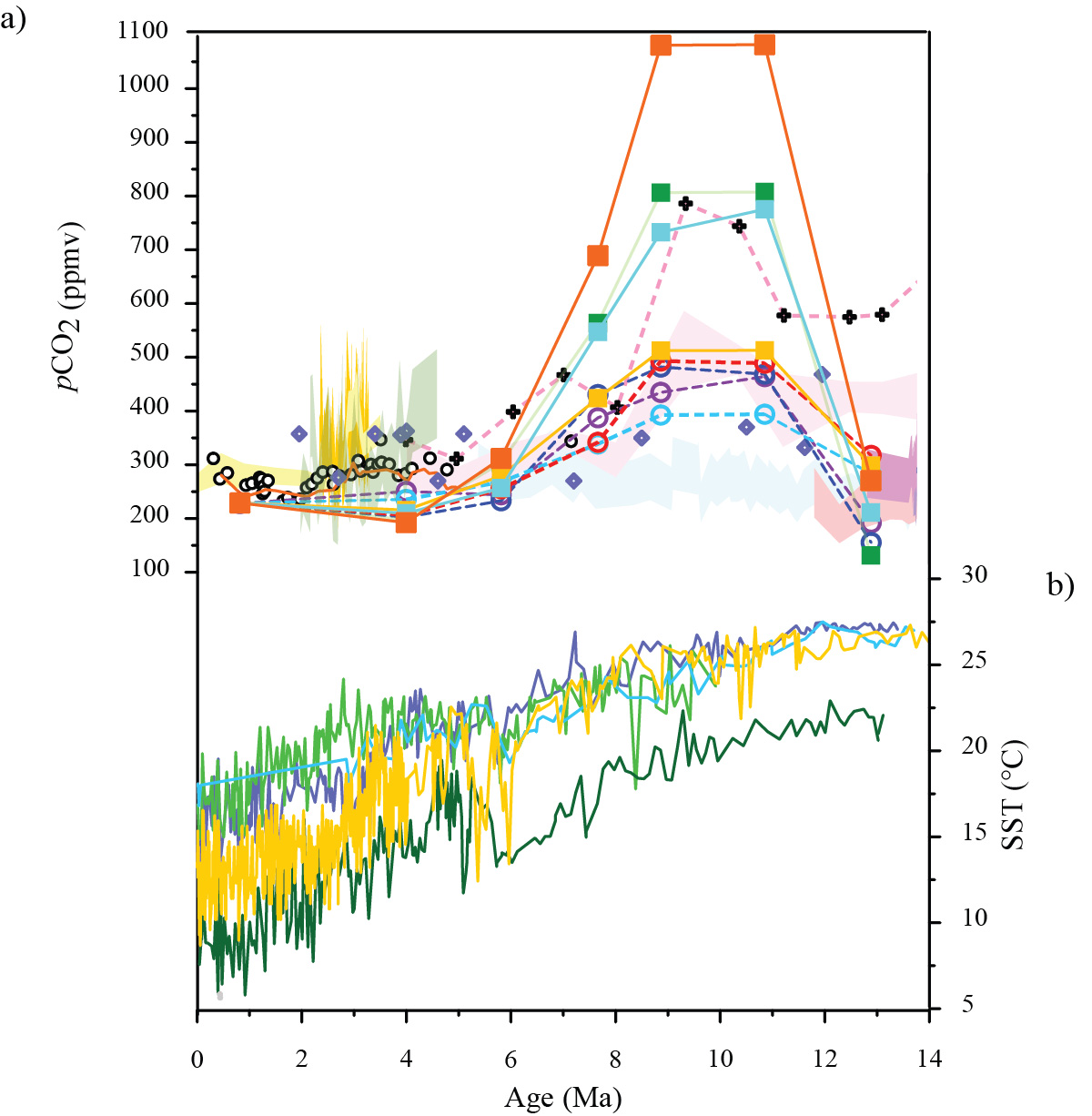Past records of pCO2 and temperature change
If CO2 concentrations in the atmosphere double from preindustrial levels, will the long term change in earth’s temperature, after slow feedbacks, be closer to 3 degrees of warming, or closer to 6 degrees of warming, or higher or lower? If there is a subsequent doubling, will the change in temperature be similar or dependent on the new mean climate state? Climate models used in the IPCC are tuned to reproduce the historical climate of the last century, and the uncertainty on their predictions increases as we deviate from this current state. Estimates of changes in temperature and pCO2 during past warm climates provide an estimate of the earth system climate sensitivity and an important opportunity to test the current generation of climate models. At the moment, the large uncertainties on tropical temperature and pCO2 estimates of the past, significantly limit the usefulness of paleoclimate data for this purpose. Our group is working on increasing the understanding of past temperature change both in the tropics and higher latitudes, as well as producing new records of past atmospheric pCO2.
Our recent work provides a potential solution to the late Miocene climatic paradox, where evidence for a strong climatic cooling was previously at odds with interpretation of a constant low pCO2 since the mid-Miocene. New pCO2 records, from both coccolithophorid and diatom carbon isotopic fractionation, suggest a strong decline in pCO2 between 9 and 6 Ma. We continue to produce higher resolution records of this transition in locations where we have independent estimations of phytoplankton growth rate variation.
We are now working to provide new evidence for carbon cycle and temperature fluctuations during the Oligocene and Early Miocene. This period shows evidence for dramatic orbitally paced variation in the growth and decay of the full East Antarctic Ice Sheet, likely causing sea level oscillations in excess of 50m. The temperature conditioning of these oscillations, and their amplification by changes in pCO2 and the carbon cycle, are major targets in two new PhD projects.

This was supported by ERC project PACE (2009-2015) and now by the Swiss National Science Foundation and is further advanced by Master’s research projects
Publications
Luz M. Mejía, Ana Méndez-Vicente, Lorena Abrevaya, Kira T. Lawrence, Caroline Ladlow, Clara Bolton, Isabel Cacho and Heather Stoll, 2017. A diatom record of CO2 decline since the late Miocene; Earth and Planetary Science Letters, 479: 18-33, Amsterdam: Elsevier
Bolton, C.T., Hernandez-Sanchez, M T. , Fuertes, M-Á. , Gonzalez-Lemos*, S., Abrevaya, L., Mendez-Vicente, A., Flores, J.A., Probert, I., Giosane, L. , Johnson, J., and Stoll, H.M., 2016. Decrease in coccolithophore calcification and CO2 since the middle Miocene. Nature Communications 7.
Contact
Deputy head of Geological Institute
Professur für Klimageologie
Sonneggstrasse 5
8092
Zürich
Switzerland